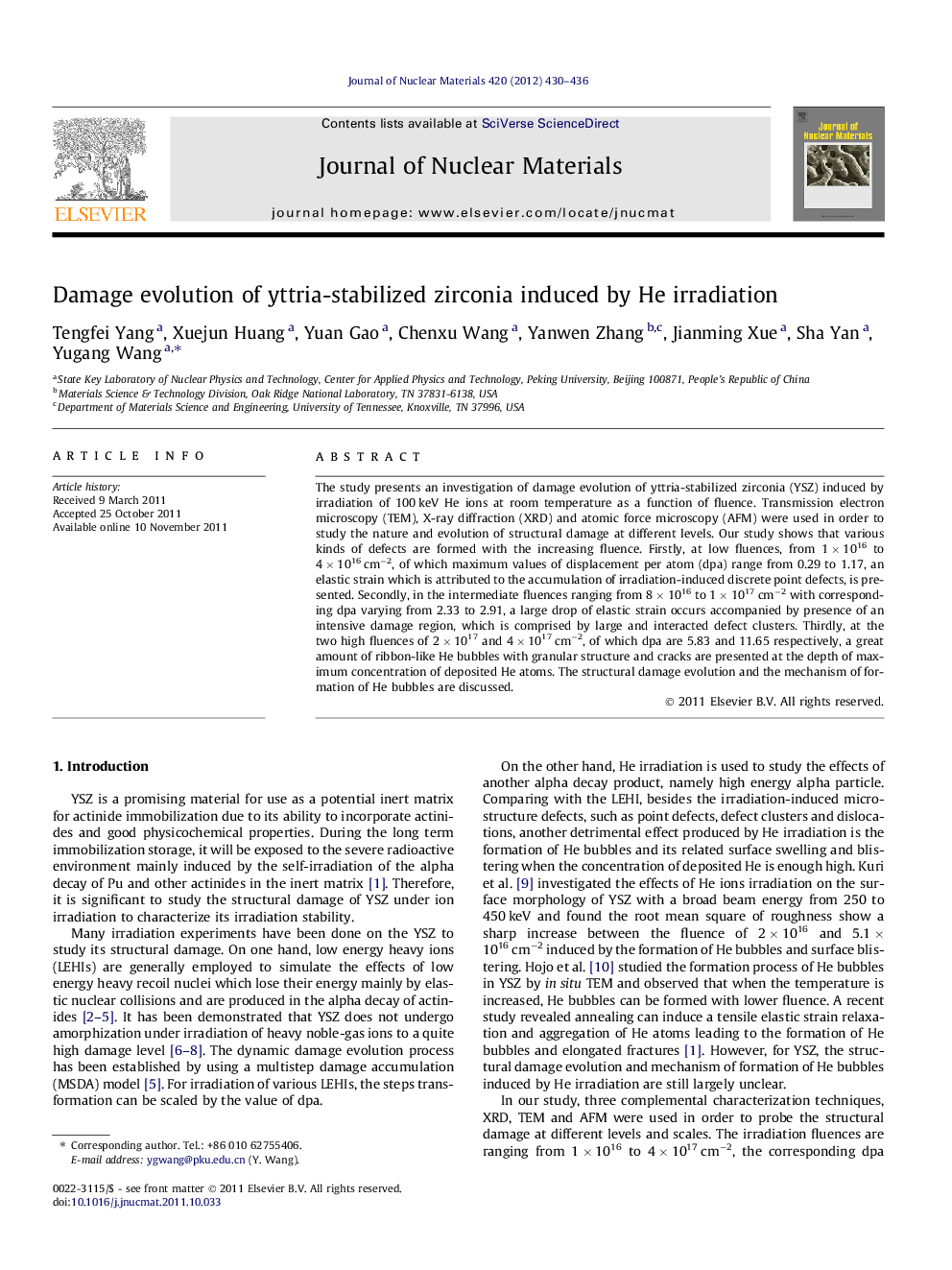| Article ID | Journal | Published Year | Pages | File Type |
|---|---|---|---|---|
| 1566489 | Journal of Nuclear Materials | 2012 | 7 Pages |
The study presents an investigation of damage evolution of yttria-stabilized zirconia (YSZ) induced by irradiation of 100 keV He ions at room temperature as a function of fluence. Transmission electron microscopy (TEM), X-ray diffraction (XRD) and atomic force microscopy (AFM) were used in order to study the nature and evolution of structural damage at different levels. Our study shows that various kinds of defects are formed with the increasing fluence. Firstly, at low fluences, from 1 × 1016 to 4 × 1016 cm−2, of which maximum values of displacement per atom (dpa) range from 0.29 to 1.17, an elastic strain which is attributed to the accumulation of irradiation-induced discrete point defects, is presented. Secondly, in the intermediate fluences ranging from 8 × 1016 to 1 × 1017 cm−2 with corresponding dpa varying from 2.33 to 2.91, a large drop of elastic strain occurs accompanied by presence of an intensive damage region, which is comprised by large and interacted defect clusters. Thirdly, at the two high fluences of 2 × 1017 and 4 × 1017 cm−2, of which dpa are 5.83 and 11.65 respectively, a great amount of ribbon-like He bubbles with granular structure and cracks are presented at the depth of maximum concentration of deposited He atoms. The structural damage evolution and the mechanism of formation of He bubbles are discussed.
► A typical three steps damage process was found for YSZ irradiated with He ion. ► The irradiation-induced structural defects in different step were characterized. ► The behavior of He in single crystal and polycrystalline YSZ were studied. ► Anisotropy cannot alter the formation process of He bubbles.
